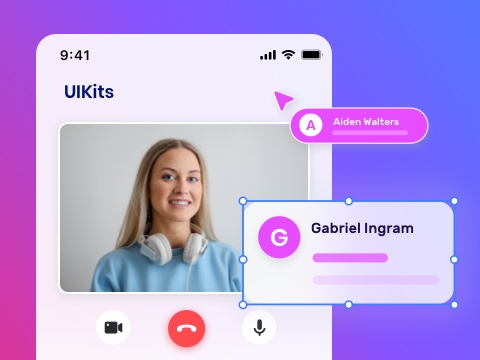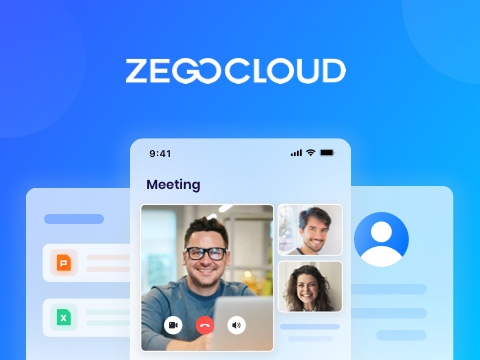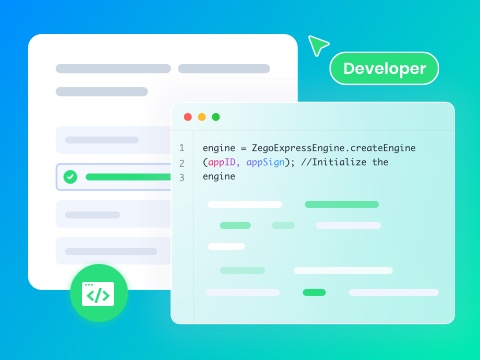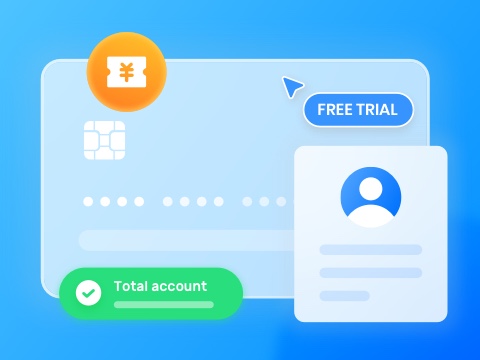Many content creators are focusing more on video content since it gets more attention on social media platforms. Viewers also expect the streams to load quickly with the rising demand for video content and live streaming.
Therefore, developers use CDN live streaming solutions that help videos load faster and reach more users without delay. This guide will explain everything about CDNs, including their benefits and the best available options.
What is CDN Live Streaming?
Live streaming CDN is a method that uses a network of nearby servers and delivers content to users more quickly. These servers are placed in different parts of the world to reduce delays and increase the loading speed of content.
Moreover, the content is cached and delivered from the closest server to the viewer. In this way, these servers help prevent buffering issues and improve video quality during live broadcasts.
Why CDN Live Streaming Matters in 2025?
The content delivery networks ensure users get their desired content without any delays or wasting any time. A CDN for live streaming is especially recommended, and the following reasons explain its importance:
- Global Reach: Live events and broadcasts now reach audiences across the world due to the accessibility of social media platforms. Hence, CDNs ensure the global broadcast is widely accessible to all users.
- High-Quality Video: People expect very clear and smooth video streams when scrolling through platforms. That’s why streaming platforms use CDNs, as they help deliver HD content without pauses.
- Massive Audiences: Streams usually attract millions of viewers at once, especially when celebrities go live. In such cases, CDNs are required, as they handle huge numbers of connections without slowing down the servers.
- Reduced Costs: Sending live videos directly from one main server to different points globally can be expensive. However, using a content delivery network lowers the load on your primary server and helps save costs.
- Enhanced Security: Cybersecurity attacks on live streaming platforms can leave them inaccessible to global audiences. Therefore, CDNs provide strong security features and protect video content and user data from attacks.
Benefits of Using a CDN for Live Streaming
You can expect various benefits when using a content delivery network for your live streams. The following section explains the advantages that you can expect from a live-stream CDN:
- Reduced Buffering: These content delivery networks ensure that content loads from the geographically closest servers. In this way, they cut down the distance video data travels and reduce the wait time by considerable margins.
- Increased Scalability: A dependable CDN offers redundant servers and smart routing, which prevents servers from overloading. They also offer protection against DDoS attacks and ensure that video delivery remains stable.
- Data Transfer: The data transfer paths are optimized, and the overall cost of streaming is reduced when CDNs cache content in nearby servers. Hence, platforms like TikTok and Instagram, which receive billions of monthly visitors, handle the data in better ways.
- Viewer Experience: Since buffering and loading times decrease due to these delivery networks, it provides a better viewing experience. Consequently, viewers stay engaged for longer periods on the platforms.
- Adaptive Video Streaming: This is an additional perk of using CDNs, which changes the video quality based on internet connectivity. Thus, the video still plays even when the internet is slow or when there is no nearby server.?
How CDN Live Streaming Works
Since it increases the speed of playing online videos, many users get curious about the workings of a live video CDN. While it is a technical and a bit complex process, the following sections will try to explain its working in a simple way:
1. Capture the Live Video Feed
The live event is recorded using software that captures the real-time video stream. This raw video is usually large and uncompressed, so developers compress the video data using formats like H.264. These steps are being taken to reduce the file size of the stream while maintaining the quality of the video. At this point, this compression is done to make the files smaller, as it helps them utilize less bandwidth.
2. Send to the Origin Server
Afterward, this recorded stream is sent to the original streaming server, where it acts as the streaming source that will be shared with the viewers. The live video streaming CDN server organizes and prepares the stream using delivery formats like HLS or MPEG-DASH. These formats break the video into smaller segments for smoother delivery. Additionally, the video is usually re-encoded or transcoded to match different device types.
3. Distribute to CDN Edge Servers
The origin server pushes the video stream to multiple CDN live-streaming edge servers around the world. These edge servers are placed in major cities to stay close to the users and to ensure they receive proper power. Thus, by caching the stream at the edge, the video does not need to travel long distances. Besides reducing buffering, the edge servers balance traffic and keep the stream smooth during sudden spikes.
4. Viewers Connect to Nearest Edge Node
When someone opens a video to play it, the CDN for live streaming automatically connects them to the nearest edge server. This decision is made after analyzing the location as well as the traffic load and server health. In short, this process avoids delays caused by the long data travel and increases reliability, especially during high-traffic events, such as concerts or game broadcasts.
5. Adaptive Bitrate Streaming
The live video CDN uses adaptive bitrate streaming to ensure smooth playback, which creates multiple versions of the video at different quality levels. Consequently, the video player switches between these versions in real-time based on the users’ internet speed and device performance. At this point, the H264 encoding plays a key role since it balances the quality and file size.
How to Choose the Right CDN for Live Streaming?
Many live-streaming CDN providers are available today, so you might get confused when opting for the right one. That’s why we have shared criteria below to help users find the right content delivery network for their streaming services:
- Global Server Coverage: You should choose a provider with wide server coverage across continents and countries. That’s because more edge locations ensure smooth delivery of your live streams to viewers in all regions of the world.
- Latency and Speed: This is very important for interactive live-streaming events and fast feedback. Before getting any CDN, check how quickly it can deliver real-time videos to different locations.
- Adaptive Bitrate Support: A good content delivery network supports multiple bitrates to match the viewer’s bandwidth. Since it helps in avoiding buffering and improving quality on slower networks, it should be a priority feature.
- Security Controls: Features like video encryption and token-based access ensure secure delivery of the content. These security features protect your premium events and private broadcasts from leaks and piracy issues.
- Pricing and Features: You should look for a CDN service with transparent pricing models and full-featured access. Generally, some providers charge by traffic, while others charge by duration or number of users.
5 Best Video CDN Providers for Live Streaming
Although you have many options, the choice is the one that fulfills the specific criteria of your project. Below are a few of the best CDN for live streaming options that you can try for your video streaming needs:
1. Akamai
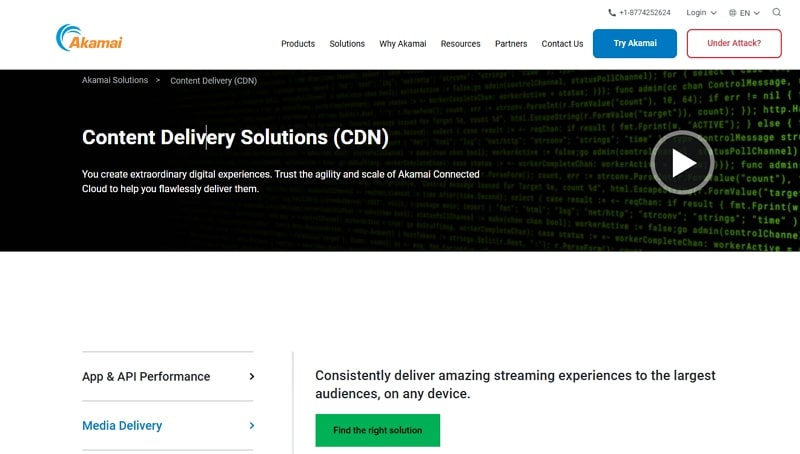
It’s a leading live-streaming CDN provider known for its vast global network of servers that supports secure token delivery and edge computing. Similarly, it has a Cloud Wrapper, which provides an efficient caching layer to reduce traffic and improve performance. Akamai’s NetStorage is a secure storage solution that automatically serves content from the geographically nearest regions. Its download delivery guarantees reliable large file downloads at a global scale.
Key Features
- API acceleration to enhance the streaming experiences for large audiences.
- Adaptive media delivery for broadcast-quality video streaming.
- Media services live to deliver low-latency videos at the global level.
Pricing Plans
- Contact Sales
2. Cloudflare Stream
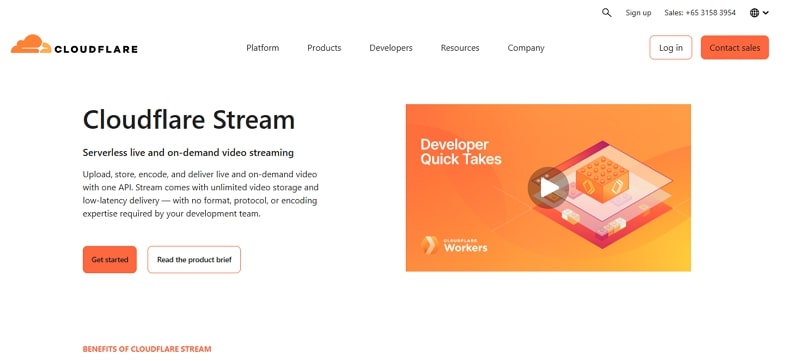
Cloudflare offers a simple content delivery solution that includes a live video streaming CDN with a unified and simplified infrastructure. Since it allows storage and delivery of video from a single pipeline, it automates codecs and handles bitrates in the same place. In addition, users pay only for the minutes delivered and stored, with no extra charges for encoding or bandwidth.
Key Features
- It enables adding multilingual captions and clipping videos without re-uploading.
- End-to-end global video storage helps in analyzing video features from one platform.
- Provides options for private and authenticated control through location and IP.
Pricing Plans
- Contact Sales
3. Amazon CloudFront
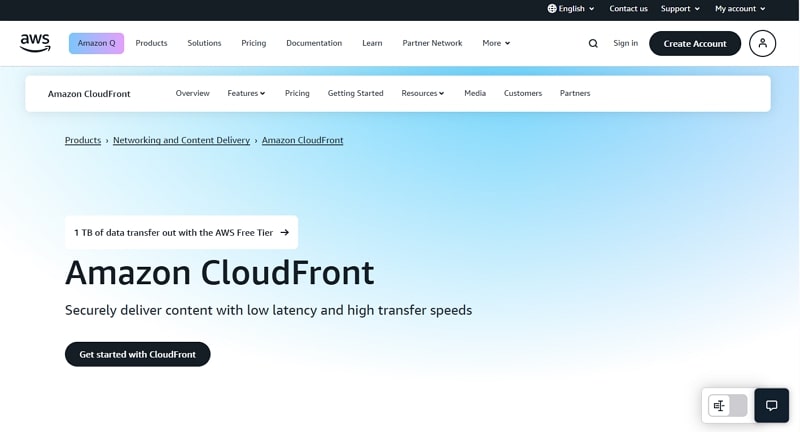
It is a highly scalable live video CDN service and provides low-latency content delivery through a network of points of presence and regional edge caches. In addition, it connects with thousands of telecom carriers and uses a redundant AWS network backbone for better playback. Its original shield is a centralized caching layer, which improves cache hit ratios to reduce the load on application origins.
Key Features
- It has over 700 points of presence in over 50 countries around the world.
- The LambdaEdge serverless compute for HLS streaming manifests manipulation.
- Integrates with CloudWatch for automatic operational metrics and insights.
Pricing Plans
- Contact Sales
4. Fastly
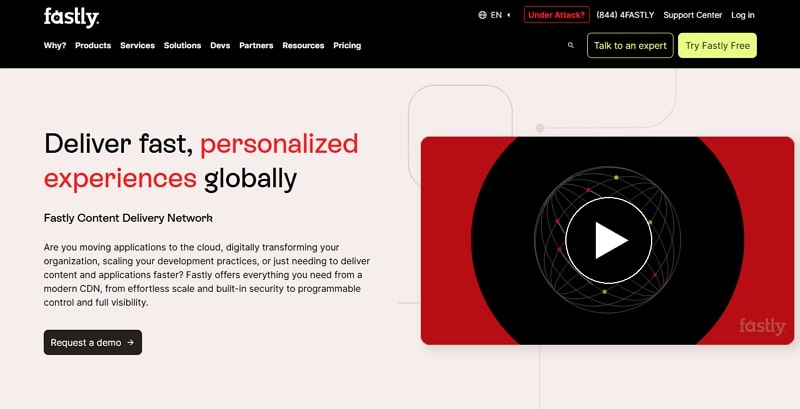
This platform provides a CDN for live streaming that offers exceptional control and instant configuration changes. Its powerful edge cloud platform is built for speed and low latency, which makes it ideal for dynamic content. Similarly, the platform claims to offer 32% faster Time To First Byte (TTFB) when compared with other options. Furthermore, Fastly has a 150ms mean purge time and has an edge capacity of 427 Tbps.
Key Features
- Real-time visibility to provide instant insights into traffic and performance.
- Comprehensive APIs that improve developer productivity.
- Instant Purge provides extensive edge caching of dynamic content.
Pricing Plans
- Contact Sales
5. KeyCDN
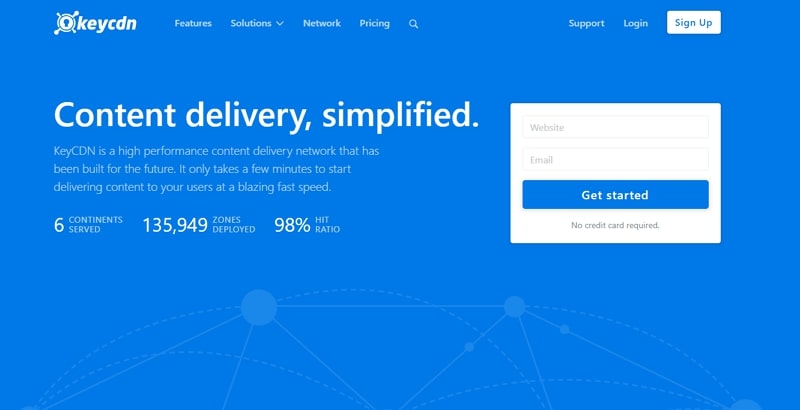
KeyCDN prioritizes speed and constantly improves performance by optimizing delivery times at a millisecond level. Furthermore, it supports the latest HTTP protocol for more efficient content delivery with multiplexing and header compression. The best CDN for live streaming has servers that span across 6 continents and have data centers in more than 40 countries globally. It also allows custom hot names for CDN URLs to provide a branded delivery experience.
Key Features
- Fully supports the IPv6 protocol to ensure broader network reach.
- Enables granular control over HTTP headers for custom caching rules.
- Automatically compresses content using Gzip to reduce file sizes.
Pricing Plans
- First 10 TB: Starts at $0.04/GB
Who Needs CDN Live Streaming and How to Optimize It?
The type of platform you have and the traffic it receives determines if you need CDN for live streaming. Apart from that, the following table also highlights the people who can benefit from these delivery networks:
| Who Needs It | Why They Need It |
|---|---|
| Media & News Platforms | Live events like news and sports must reach millions without delay, so CDN ensures smooth, reliable delivery worldwide. |
| Online Education Platforms | Students learning remotely need clear, real-time video. CDN helps prevent buffering and keeps lessons steady across regions. |
| E-Commerce / Live Shopping | Buyers expect fast, glitch-free product demos. CDN reduces lag and supports real-time interaction during live shopping events. |
| Gaming & Esports Platforms | Competitive gaming demands low-latency video streams. CDN ensures players and viewers stay in sync without video delays. |
| Corporate Webinar Tools | Global companies need secure video delivery for meetings. CDNs handle traffic spikes and keep streams stable for all staff. |
| Entertainment Events (Concerts/Festivals) | Online concerts attract huge audiences fast. CDN avoids crashes and keeps audio and video quality high during live events. |
| Religious & Non-Profit Groups | Reaching followers across regions requires reliable streaming. CDN helps deliver smooth services even on slower connections. |
| Fitness & Lifestyle Apps | Workout classes need precise timing and clear video. CDN keeps the stream fast, synchronized, and easy to follow. |
How ZEGOCLOUD Powers CDN Live Streaming for Real-Time Apps
ZEGOCLOUD uses a global network of 212 edge nodes to deliver live streams quickly and smoothly to users worldwide. Its CDN Live Streaming SDK is highly recommended since users can integrate it into any platform, and it offers a minimal latency of around 600ms. Similarly, it provides over 20 pre-built UIKits that help with building your own engaging live-streaming applications without any experience.
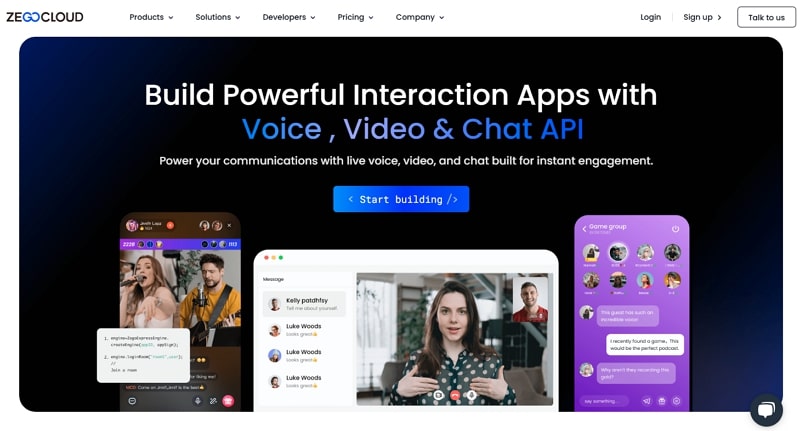
These UIKits allow dynamic changing layouts, which adapt according to your platform and screen requirements. It features functions like quality monitoring to ensure the playback happens in the best quality. Furthermore, the super-resolution feature is helpful in improving the quality of the streams even when CDN servers are located far away. Due to these advanced features, it can support up to 10 million concurrent viewers in a single stream.
Apart from building from its UIKits, users can directly integrate the SDK into their platform’s code library. Moreover, its automatic connection management changes the stream quality according to different network situations. Similarly, it ensures 99.99% uptime, which means your live streams on your platform stay connected all the time. In addition, this reliable platform’s security and privacy are tested and approved by DNV and GDPR.
Conclusion
To conclude, CDN live streaming is now important for platforms delivering smooth live videos worldwide. These content delivery networks are important as they cache the data in nearby servers and help users watch videos by loading them quickly.
Platforms like Akamai and Cloudflare Stream provide these services for bigger streaming sites. Equally, ZEGOCLOUD is a good option, especially for startups, due to its live-streaming SDK and UIKits.
FAQ
Q1: How does CDN live streaming differ from traditional RTMP streaming?
While RTMP is mainly used to push the live stream from the broadcaster to the server, CDN streaming focuses on distributing that stream to end viewers via edge nodes. CDN live streaming is more scalable and better suited for high viewer counts.
Q2: What latency can I expect with CDN live streaming?
Typical latency ranges from 3 to 10 seconds, depending on the CDN provider and the player settings. For ultra-low-latency needs (under 1 second), specialized protocols like WebRTC or Low-Latency HLS may be used.
Q3: What formats or protocols are used in CDN live streaming?
Commonly used formats include HLS (HTTP Live Streaming) and DASH (Dynamic Adaptive Streaming over HTTP), both of which support adaptive bitrate playback.
Let’s Build APP Together
Start building with real-time video, voice & chat SDK for apps today!


